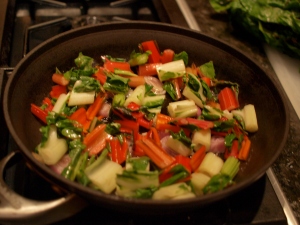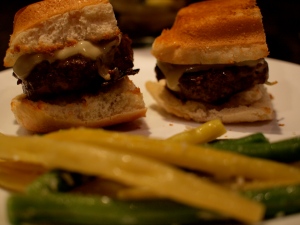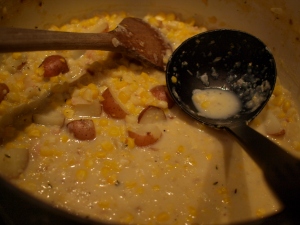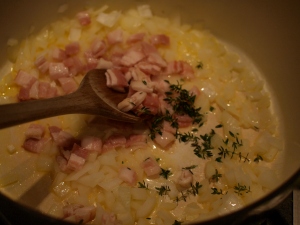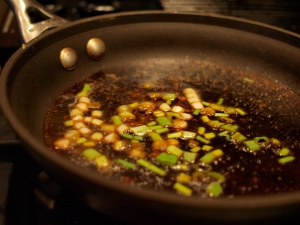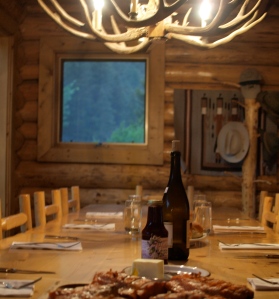 Yep, this is a picture of my kids in Paris. Paris, France. A couple years ago when my husband was between jobs and the kids were still young enough to miss school, we spent a winter and spring skiing and living in France. But my family’s travels are really not the point of this post. (Although I must say, there’s nothing like a couple months in a the markets and cafes of France to wean the little people off mac-n-cheese and chicken nuggets; so what if the kids discovered baguettes and chocolate chaude, France was still a turning point in my family’s culinary life.)
Yep, this is a picture of my kids in Paris. Paris, France. A couple years ago when my husband was between jobs and the kids were still young enough to miss school, we spent a winter and spring skiing and living in France. But my family’s travels are really not the point of this post. (Although I must say, there’s nothing like a couple months in a the markets and cafes of France to wean the little people off mac-n-cheese and chicken nuggets; so what if the kids discovered baguettes and chocolate chaude, France was still a turning point in my family’s culinary life.)
What is the point here: eggs. I think the French make the best eggs in the world. Ever since the first time I went to France, I’ve loved those little omelettes they serve in just about any cafe or brasserie. (And yes, I know Les Deux Magots is touristy, but to me it’s still the epitome to Parisian literary cafes — and they make damn good eggs.) It seems like the worst omelette in France is better than any of the overstuffed, football-like behemoths you get in American breakfast joints. The French versions are creamy, delicate, and just the perfect size. And believe me, I’ve tried to recreate them many, many times over the years, and always failed.
Then I went to cooking school and — voila! — les oeufs were the subject of our very first lesson. If we had done nothing but chat and drink wine for the rest of the course, I would have gotten my money’s worth. So now I am thrilled to say that French omelettes are not just for European family vacations anymore; they’ve become a large part of our weeknight dinner rotation. With a simple salad (and French bread, mais oui), they are about the perfect meal, even for finicky kids like mine. Yes, you have to cook them one at a time, but they only take about two minutes each.
Here’s how to make les oeufs parfaites commes des Francais:
First, get yourself an 8-inch nonstick pan and protect it with your life. I’m not normally a huge fan of nonstick pans, but for this purpose nonstick is crucial and will probably save your some tears. If your 8-inch pan is old or scratched, get a new one. It doesn’t have to be expensive because you won’t be using it for high-heat applications or anything else actually. Don’t use soap on it, avoid contact with all utensils except a rubber spatula, and store it wrapped in a dishtowel.
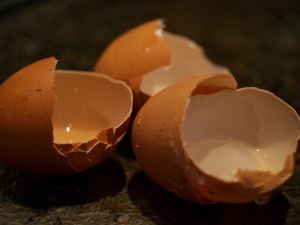
French Omelette
Ingredients:
3 large eggs (These will be much better if you have free range, organic, very fresh eggs.)
1 pat of butter (unsalted best)
1 tbs. shredded Gruyere cheese (Any kind of cheese you like will taste great, but this is traditional; you really only need about 4-5 strokes over a cheese grater’s worth here, so splurge on the cave-aged kind if you can find it.)
Salt & pepper
Chopped fresh herbs or herbes de Provence (optional)

Get all your ingredients out and ready to go; this is a very fast-moving process. Crack the eggs into a bowl and beat lightly with a fork; add a pinch of salt. Put the butter in the pan over medium heat. When the butter has melted and gone from foamy to not, pour the eggs into the pan.

Immediately begin stirring the eggs with a rubber spatula and keep stirring them the entire time. When very soft curds begin to form (about 1 minute), you can slow down, let your eggs rest briefly, and sprinkle them with the cheese, pepper, and herbs.

Lift the pan off the heat. The eggs should be very slightly solidified but still very moist. If there are bits that are completely uncooked, tilt the pan and let the egg run over to the edge to cook slightly. The goal here is to have the eggs just cooked but not browned on the bottom at all.

Tilt the pan over a (warmed is nice) plate and use your spatula to fold the top third over, then gently slide the omelette onto the plate, folding the last third back on itself to create a roll.
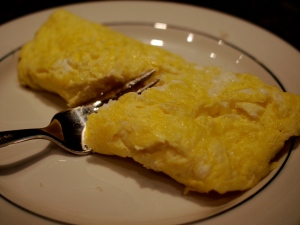
Eat immediately. (Just like most eggs, they taste crappy when they’re cold.)
Some variations: My son, being a bit of a pain, likes “stuff” in his omelettes (and who am I to turn down a kid’s request for vegetables?). So for him, I first chop and saute whatever veggies I’m using, then set them aside, proceed with the omelette-making, and add the stuff when I add the cheese (after I’m done with the stirring). We’ve made versions filled with diced red peppers, tomatoes, mushrooms, and carmelized onions. If there’s any ham or cooked bacon around, that’s obviously a nice addition, too. Me, I love them straight up.
Bon appetit!
 The reason for this change is simple: I wanted to create a space where I could expand on some of the ideas I’ve explored in this blog as well as showcase the other things I’m working on. So, in addition to my regular blog posts and articles, I am now offering private kitchen consulting sessions and group classes. These programs are designed to help you reboot your family’s eating habits in a practical, real-life way. They are really amazing — super fun, informative, and inspiring. There’s a lot more info about all my programs at reallifedelicious.com, so please check it out.
The reason for this change is simple: I wanted to create a space where I could expand on some of the ideas I’ve explored in this blog as well as showcase the other things I’m working on. So, in addition to my regular blog posts and articles, I am now offering private kitchen consulting sessions and group classes. These programs are designed to help you reboot your family’s eating habits in a practical, real-life way. They are really amazing — super fun, informative, and inspiring. There’s a lot more info about all my programs at reallifedelicious.com, so please check it out.
